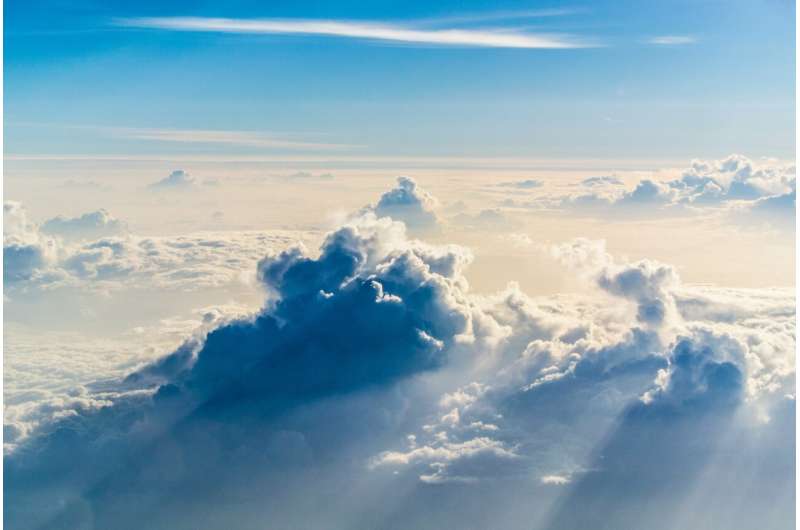Researchers reveal stratospheric air intrusion process

Long-term monitoring of radionuclides transported with through the atmosphere can help to reveal atmospheric dynamics. The cosmogenic 10Be/7Be ratio is an effective tracer of atmospheric motion.
However, the high-resolution data acquisition is limited because the 7Be-γ spectral counting method requires large samples size, and 10Be can only be measured by accelerator mass spectrometry (AMS).
Recently, a research group from the Institute of Earth Environment of the Chinese Academy of Sciences (IEECAS) obtained the atmospheric 7Be and 10Be observational records with daily resolution for the whole year in Chengdu, a major city in the Sichuan Basin of China, by the 7Be-10Be-AMS analysis method.
The study was published in Journal of Geophysical Research: Atmospheres on August 8.
Based on this observation record, the researchers preliminarily realized long-period continuous tracer of the stratospheric air intrusion in the Sichuan Basin by effectively removing the interference of approximately 22% of the annual average resuspended dust 10Be. They found that the intensity of stratospheric air intrusion in spring and summer was significantly higher than in autumn and winter by approximately four times.
The local synoptic-scale stratospheric air intrusion can cause rapid downward transmission of natural and anthropogenic trace chemicals in the stratosphere.
Moreover, the researchers used the accumulated observational data to evaluate the migration of atmospheric substances and their impact on the environment and climate during the stratospheric atmospheric air intrusion in the Sichuan Basin.
This work also demonstrated that high-resolution 10Be/7Be can be used as an effective tracer for deep convective transport in the stratospheric atmosphere. And it provides a new method for exploring the upper atmosphere source of surface atmospheric ozone.
More information: Xuke Liu et al, Monitoring Surface 10 Be/ 7 Be Directly Reveals Stratospheric Air Intrusion in Sichuan Basin, China, Journal of Geophysical Research: Atmospheres (2022). DOI: 10.1029/2022JD036543
Journal information: Journal of Geophysical Research - Atmospheres
Provided by Chinese Academy of Sciences





















